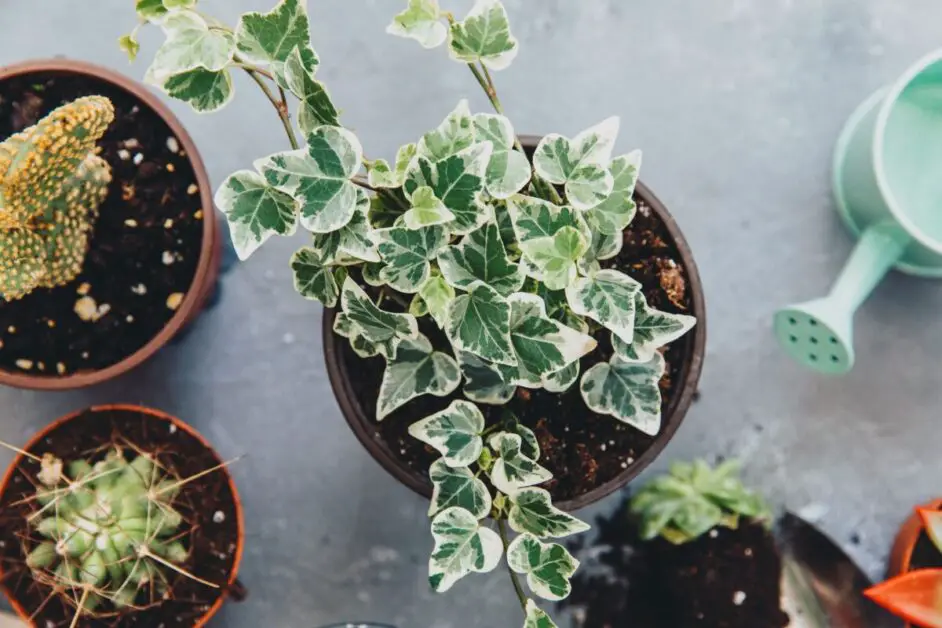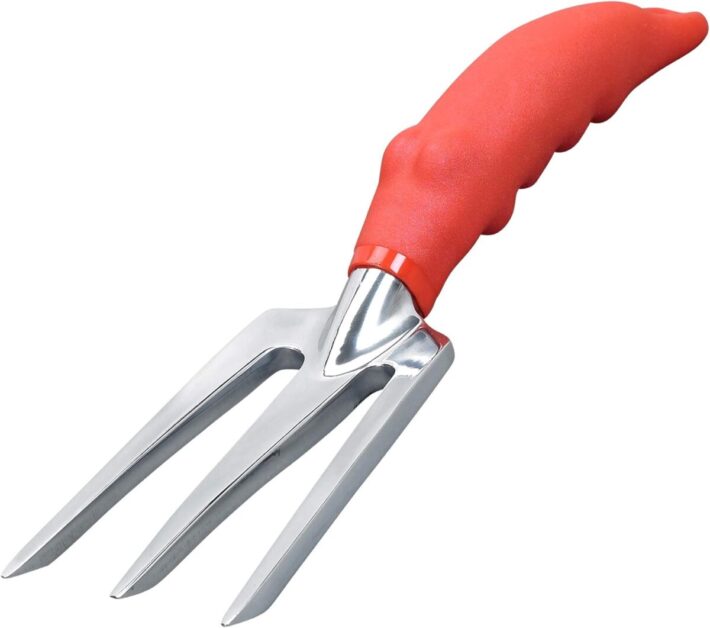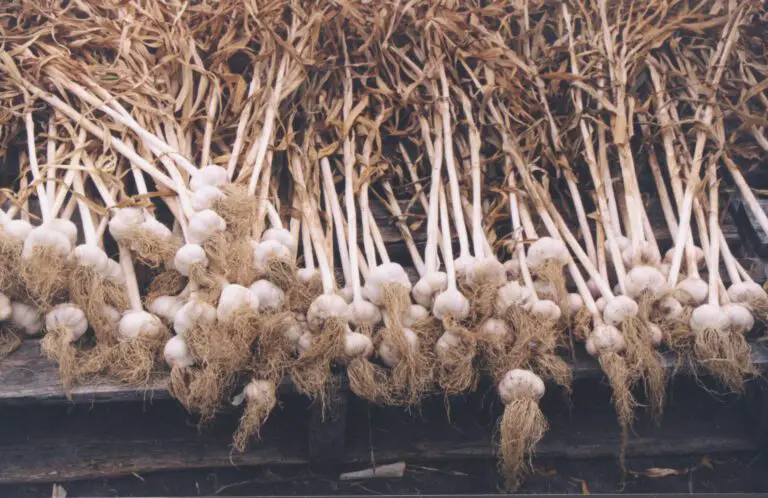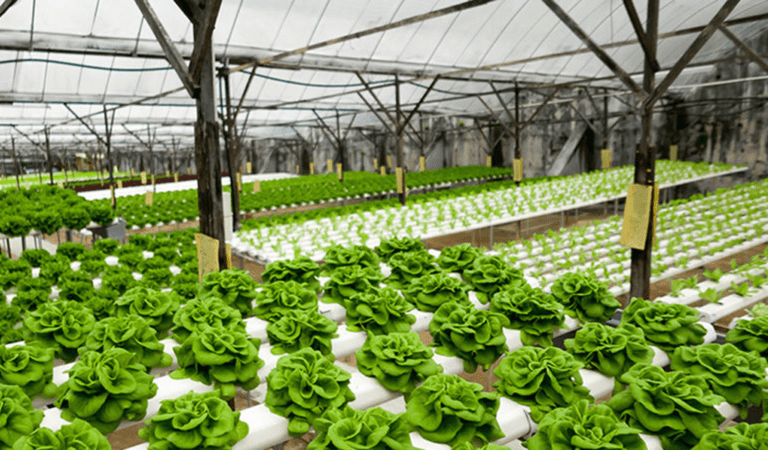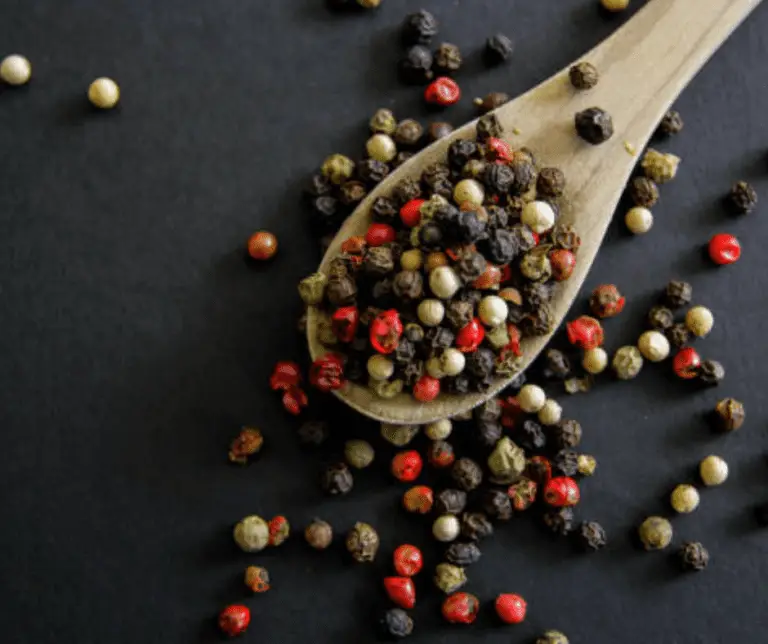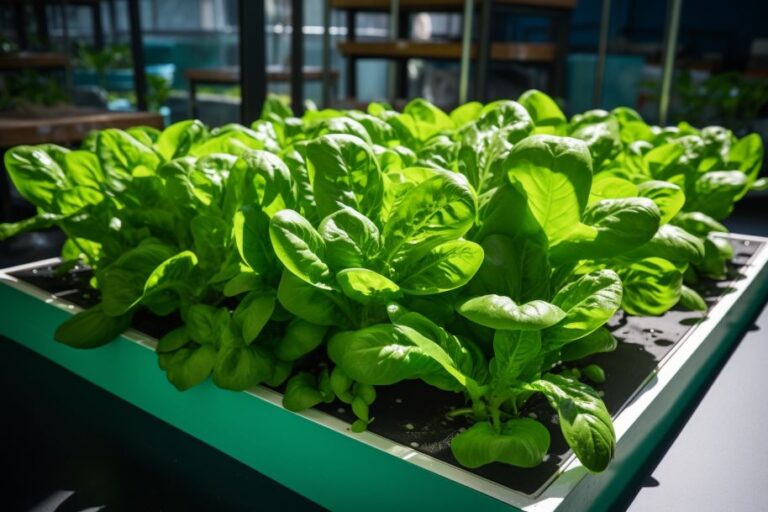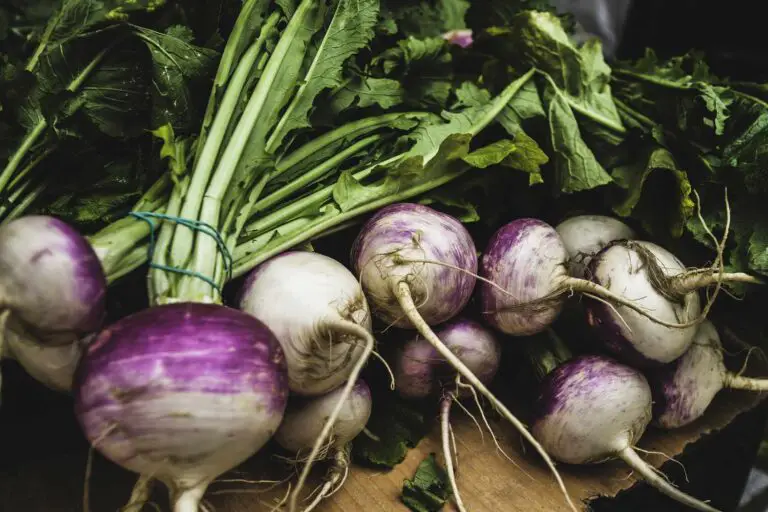English Ivy: How To Grow And Manage Hedera Helix
Are you ready to add a touch of classic elegance to your garden or home with the iconic English Ivy, also known as Hedera Helix? This versatile and charming plant is not only a beautiful addition to any space but also a relatively easy-to-grow green companion. From cascading down walls to climbing trellises, English Ivy offers endless possibilities for enhancing your surroundings.
Join us as we delve into the world of growing and managing Hedera Helix, sharing expert tips and insights on how to care for this timeless favorite. Get ready to cultivate your own lush green oasis with English Ivy and elevate your space with its timeless beauty!
Table of Contents
The Fascinating World of Hedera Helix

- English Ivy, scientifically known as Hedera Helix, is a popular plant for both indoor and outdoor gardens.
- It is known for its ability to adapt and thrive in various conditions, such as climbing up trellises, cascading down walls, or providing groundcover under trees.
- English Ivy has air-purifying qualities, filtering out toxins and releasing oxygen, making it an excellent choice for indoor spaces.
- It acts as a natural pest repellent, deterring unwanted insects and pests from invading your garden.
- The dense foliage of English Ivy provides excellent erosion control, making it ideal for slopes and hillsides.
To cultivate English Ivy, consider the following points:
- Selection of the perfect location: English Ivy prefers partial to full shade, with well-drained soil.
- Propagation techniques: English Ivy can be propagated through stem cuttings or layering.
- Care and maintenance: Regular watering, pruning, and fertilizing are necessary to keep English Ivy healthy and thriving.
- Pest and disease management: Monitor for common pests such as scale insects and spider mites, and treat accordingly.
- Safety considerations: English Ivy can be invasive in some areas, so it is essential to control its growth and prevent it from spreading to unwanted areas.
Understanding the Benefits of Growing English Ivy
English Ivy, scientifically known as Hedera helix, is a versatile and beneficial plant that offers a multitude of advantages for gardening enthusiasts. This evergreen vine has gained popularity not only for its lush and attractive appearance but also for its numerous environmental benefits.

The following table explains about the benefits of growing English Ivy:
| Benefits of Growing English Ivy | Description | Quantitative Content |
|---|---|---|
| Air Purification | English Ivy is known for its ability to filter toxins from the air and release oxygen, improving indoor air quality. | Studies show English Ivy can remove up to 78% of airborne mold in 12 hours. |
| Respiratory Health Improvement | The plant’s air-purifying properties can help reduce respiratory issues and allergies, promoting better health. | Research indicates a 94% reduction in airborne fecal matter with English Ivy. |
| Anti-inflammatory & Antioxidant Effects | English Ivy has compounds that exhibit anti-inflammatory and antioxidant effects, beneficial for overall well-being. | Studies suggest English Ivy extracts have antioxidant activity comparable to Vitamin E. |
| Ground Cover & Erosion Control | Its dense foliage provides excellent ground cover, preventing soil erosion on slopes and hillsides. | English Ivy can reduce soil erosion by up to 50% on steep slopes. |
| Medicinal Uses | English Ivy has been used in traditional medicine for various ailments, showcasing its medicinal properties. | Historical records document the use of English Ivy for coughs, bronchitis, and asthma. |
| Protection of Buildings | When grown on walls, English Ivy can protect buildings by reducing the impact of weathering and erosion. | Studies show a 15% decrease in building maintenance costs with the presence of English Ivy. |
| Support for Wildlife | The plant offers shelter and food for wildlife, contributing to biodiversity and ecosystem health. | English Ivy supports over 50 species of birds and various insects. |
Whether you’re a seasoned gardener or a beginner, incorporating English Ivy into your landscape can be a rewarding and environmentally conscious choice.
Selecting the Perfect Location for Your English Ivy
Choosing the perfect location for your English Ivy is crucial for its growth and overall health. This resilient plant thrives in various environments, but there are a few factors to consider in order to maximize its potential.
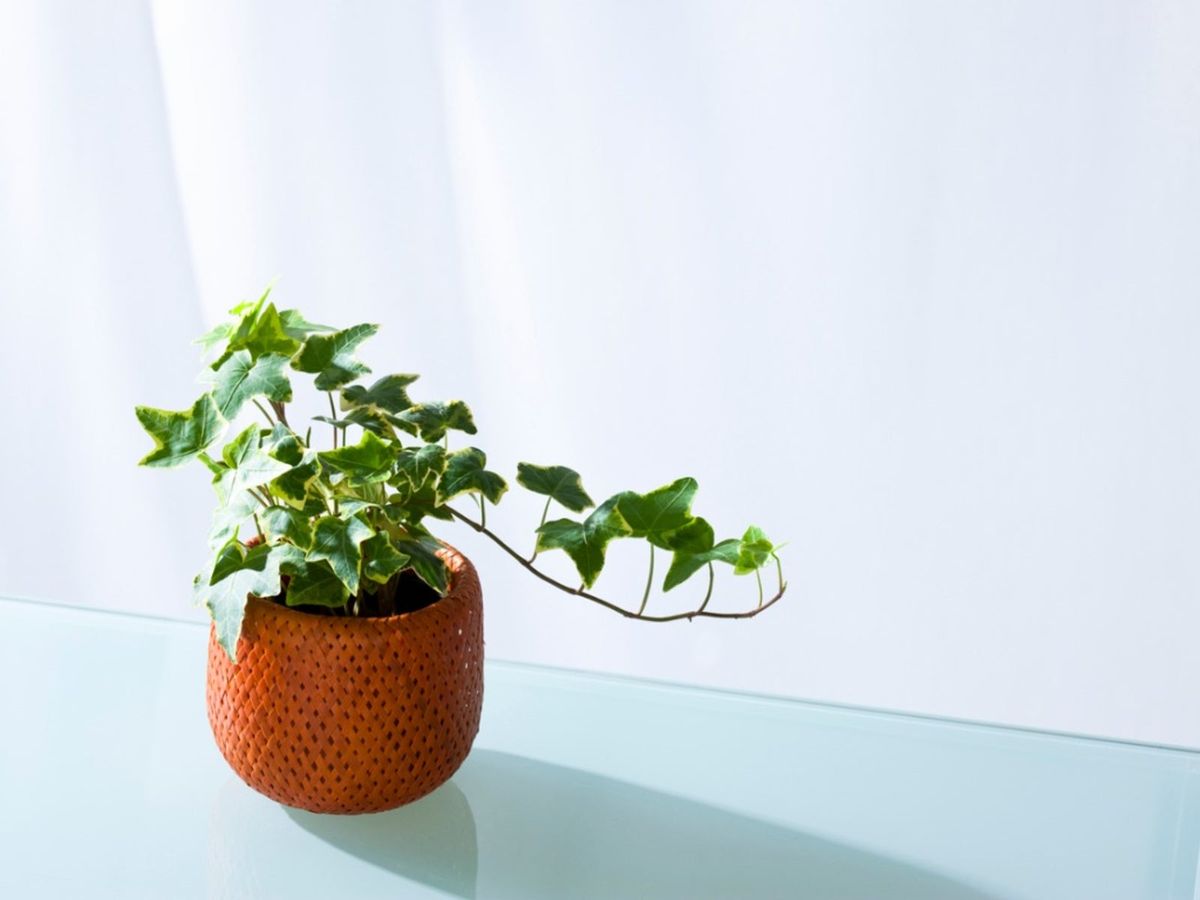
By carefully selecting the location for your English Ivy, taking into account factors such as sunlight exposure and soil quality, you can create an ideal environment for your plant to thrive. Consider these key factors as you embark on your journey to create a lush and vibrant space with English Ivy.
Preparing the Soil for Optimal Growth
Preparing the soil is a crucial step in ensuring optimal growth of English Ivy. The success of your ivy plants greatly depends on the condition of the soil in which they are planted. Before you start planting, take some time to prepare the soil to provide the ideal environment for your English Ivy to thrive.
- Choose Well-Draining Soil: Opt for sandy loam or loamy soil rich in organic matter for English Ivy, ensuring it is moist but not waterlogged to prevent root rot.
- Aerate the Soil: Loosen the soil using a garden fork or tiller before planting to create air pockets, aiding in root growth and nutrient uptake.
- Fertilize the Soil: Use a slow-release, balanced fertilizer to provide essential nutrients for healthy growth, following the manufacturer’s instructions for even application.
- Prepare for Root Development: Properly preparing the soil supports root development, nutrient absorption, and overall plant vigor, setting the foundation for healthy English Ivy plants.
By taking the time to properly prepare the soil, you will be setting the foundation for healthy and thriving English Ivy plants. The right soil conditions will support root development, nutrient absorption, and overall plant vigor. Remember, healthy soil leads to healthy plants, so invest in the initial soil preparation to maximize the success of your English Ivy garden.
I have been using the following product from a while. Here is a review about them. The Fiskars Ergo Scratch Garden Cultivator offers a comfortable grip and sturdy construction, making it suitable for various gardening tasks. Its ergonomic design reduces hand fatigue, allowing for extended use without discomfort. The Spear & Jackson Neverbend Carbon Steel Digging Fork boasts solid forged carbon steel construction, providing exceptional strength and durability.
With its weatherproofed hardwood shaft and forward-tilted handle, it offers optimal digging angles for efficient soil preparation. The Corona Clipper CT-3040I Comfort Fork features tempered steel tines and a comfortable handle, making it easy to use for prolonged periods. Its versatility makes it ideal for a wide range of gardening applications, from aerating soil to loosening weeds. I highly recommend these tools for the garden.
✅ Ergonomic Design: It features an ergonomic handle designed for comfortable gripping, allowing for more control during use and reducing fatigue, especially during extended gardening sessions.
✅ Versatility: This hand cultivator is suitable for various gardening tasks, including digging in tough soil, aerating soil, removing weeds, and more, contributing to overall plant health and appearance.
✅ Sharp Tines: The polished aluminum tines remain sharp through heavy use, ensuring efficient performance and excellent durability over time.
✅ Easy Storage: Equipped with a hang hole, the cultivator can be easily stored on hooks or racks, optimizing space in your gardening shed or garage.
✅ Smart Technologies: Fiskars products are known for their innovative features and smart technologies, making gardening tasks easier and more enjoyable.
✅ Lifetime Warranty: The product comes with a full lifetime warranty, providing assurance of its quality and reliability.
❌ Manual Operation: Being a manual tool, it requires physical effort, especially when dealing with tough soil or stubborn weeds, which may not be suitable for everyone, particularly those with physical limitations.
❌ Limited Reach: As a handheld tool, the cultivator may have limitations in reaching deeper or harder-to-access areas in the garden, requiring additional tools or techniques for such tasks.
❌ Potential for Breakage: Although the cultivator is designed for heavy-duty use, there is still a possibility of breakage or damage under extreme conditions or misuse, necessitating careful handling and maintenance.
❌ Not Ideal for Large Areas: While suitable for small to medium-sized gardening tasks, it may not be the most efficient option for larger garden areas or extensive landscaping projects, where motorized or larger tools may be more appropriate.
❌ Aluminum Material: Some users may prefer steel or other materials over aluminum, raising concerns about potential durability or strength issues, although the polished aluminum used in this cultivator is designed for longevity.
✅ Comfortable Grip: Designed with a cushioned comfort grip, this fork ensures a comfortable and secure hold, reducing strain on the hands and wrists during extended use.
✅ Professional Grade: Built for professional-grade applications, the fork features three rigid straight tines that effectively penetrate the ground, making it suitable for various gardening tasks, including aerating soil, turning compost, and transplanting.
✅ Versatile: The fork’s design allows for versatile use in both small and large gardening spaces, from raised beds to larger garden plots, providing flexibility for different gardening needs.
✅ Lifetime Warranty: Backed by a lifetime warranty, users can have peace of mind knowing that they are investing in a high-quality and long-lasting gardening tool.
❌ Limited Availability: Depending on the region, the availability of the product may be limited, leading to potential delays or difficulties in obtaining it, especially for customers outside the United States.
❌ Discontinued Model: The product description indicates that it may be discontinued, which could affect long-term availability and support for replacement parts or warranty claims.
❌ Shipping Fees: For international customers, the additional shipping and import fees may significantly increase the total cost of purchasing the fork, making it less economical compared to locally available alternatives.
❌ Single Piece Construction: While the one-piece construction of the fork contributes to its durability, it may also pose challenges if any component gets damaged or needs replacement, potentially requiring the purchase of an entirely new fork rather than individual parts.
✅ Rust Resistance: With a hammer-finished epoxy-coated head, this digging fork offers improved resistance to rust, scratches, and humidity in the soil, ensuring longevity and reliability even in harsh outdoor conditions.
✅ Weatherproofed Shaft: The weatherproofed hardwood shaft enhances the fork’s durability, offering greater resistance to moisture and environmental elements, prolonging its lifespan and usability.
✅ Ergonomic Design: Featuring a super grip handle with a forward tilt, this digging fork provides an ideal angle for digging, reducing strain on the user’s wrists and back, and enhancing overall comfort during use.
✅ Versatility: Ideal for digging and breaking up soil, this digging fork is suitable for various gardening tasks, including planting, transplanting, and aerating soil, making it a versatile tool for both amateur gardeners and professionals.
❌ Limited Availability: Depending on the region, the availability of the Spear & Jackson 1680NB Neverbend Carbon Steel Digging Fork may be limited, leading to potential delays or difficulties in obtaining it, especially for customers outside the United States.
❌ Higher Price: Compared to some other digging forks on the market, this model may have a higher initial cost, which could make it less accessible to budget-conscious consumers.
❌ Single Handle Design: Some users may prefer a digging fork with a D-handle design for better control and maneuverability, especially when working in confined spaces or tight angles, which the Spear & Jackson 1680NB Neverbend Carbon Steel Digging Fork lacks.
❌ Weight: With a weight of 4.8 pounds, this digging fork may be heavier than other models, potentially causing fatigue during prolonged use, especially for individuals with less upper body strength or mobility issues.
Choosing the Right English Ivy Variety for Your Garden
When it comes to choosing the right English Ivy variety for your garden, there are several factors to consider. Each variety has its own unique characteristics, including growth rate, leaf shape, and color.

| English Ivy Variety | Advantages | Disadvantages | Characteristics |
|---|---|---|---|
| Generic Deep Green | – Very hardy | – Not all forms are hardy in certain zones | – Three-lobed leaves |
| Needlepoint | – Interesting texture | – May not be as hardy as generic type | – Tiny pointed leaves |
| Sweetheart | – Heart-shaped leaves | – Limited hardiness | – Heart-shaped leaves |
| Manda’s Crested | – Curly leaf type | – Limited hardiness | – Curly leaf type |
| Variegated Types | – Aesthetic appeal with variegation | – Varied hardiness depending on cultivar | – Varied leaf colors and patterns, including green with white veins, all white, or gold variegation |
| Climbing Ivy | – Provides solid look to walls or fencing | – Invasiveness | – Climbing and creeping growth habit, uses root-like “holdfasts” to climb, can reach heights of up to 50 feet, collects nutrients through holdfasts, somewhat toxic especially berries |
| Creeping Ivy | – Groundcover option | – Invasiveness | – Creeping growth habit along the ground, can be used as a groundcover, somewhat toxic especially berries |
Ultimately, the right choice will depend on your specific preferences and the conditions of your garden. Consider factors such as sunlight exposure, soil type, and climate when selecting the English Ivy variety that will thrive best in your garden. By carefully choosing the right variety, you can ensure a vibrant and healthy display of English Ivy in your outdoor space.
Propagating English Ivy: Methods and Tips
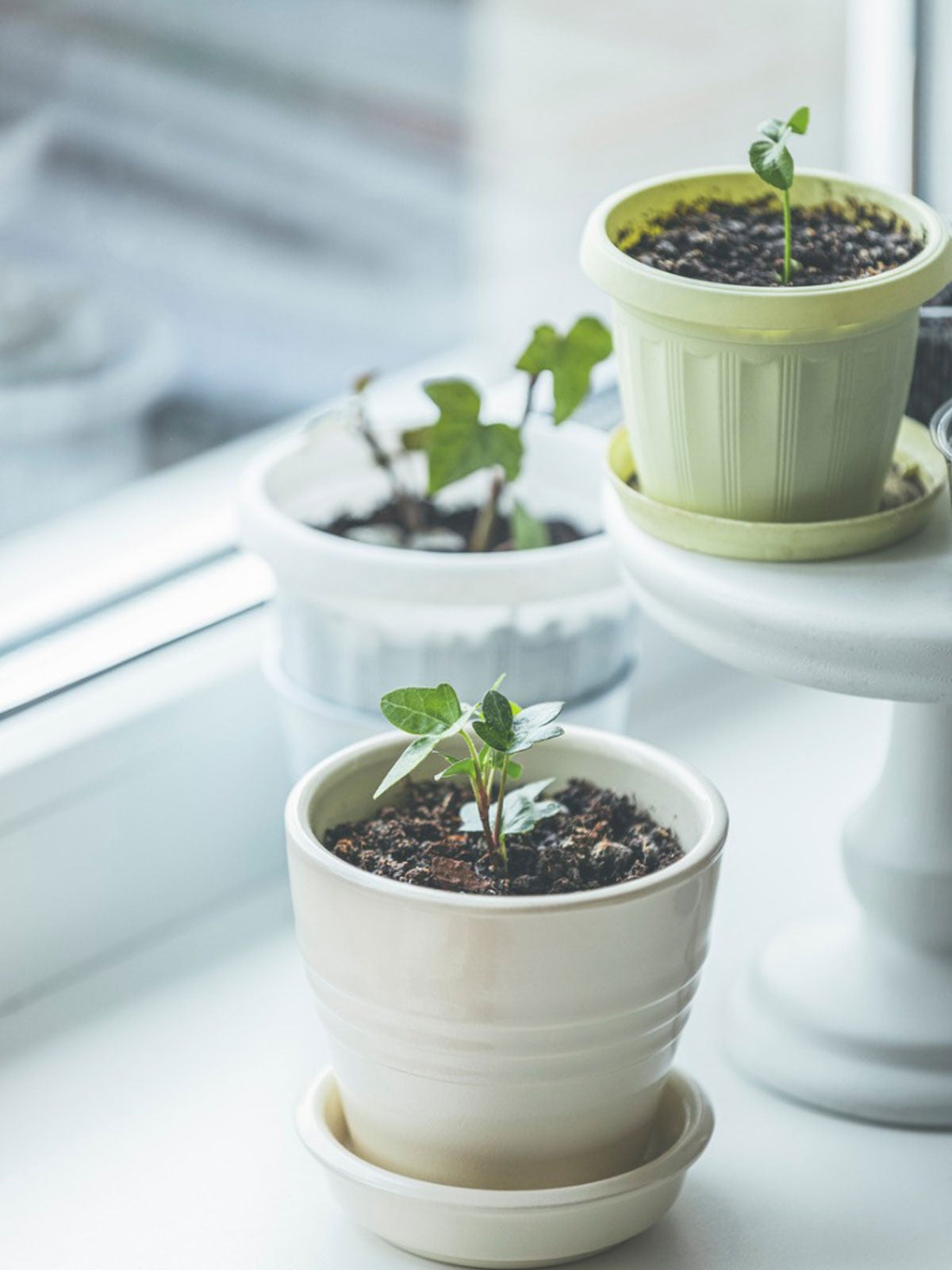
English Ivy, scientifically known as Hedera helix, is a popular plant among gardeners for its lush and vibrant foliage. If you want to expand your ivy collection or share this beautiful plant with fellow gardening enthusiasts, propagating English Ivy is a simple and rewarding process. There are several methods and tips you can employ to ensure successful propagation.
By following these steps for stem cuttings propagation, you can easily expand your English Ivy collection and share this beautiful plant with others.
Planting English Ivy: Step-by-Step Guide
Planting English Ivy is a straightforward process that can be completed in a few simple steps. Before planting, it is essential to choose the right variety of English Ivy for your garden. There are numerous cultivars available, each with its unique characteristics and growth patterns.
Place the ivy into the hole, ensuring the top of the root ball is level with or slightly above the soil surface.
Backfill the hole with soil and gently firm it around the plant.
Maintain consistent moisture during the establishment period to promote healthy root growth.
In summary, planting English Ivy involves selecting a suitable location, preparing the soil, choosing the right variety, and properly placing and watering the plant. By following these steps, you can successfully plant English Ivy in your garden, ensuring its vibrant growth and beauty.
Watering and Fertilizing English Ivy: Best Practices
Watering and fertilizing English Ivy properly is essential for its growth and overall health. English Ivy, also known as Hedera Helix, has specific watering needs that should be met to ensure its optimal performance in both indoor and outdoor settings.
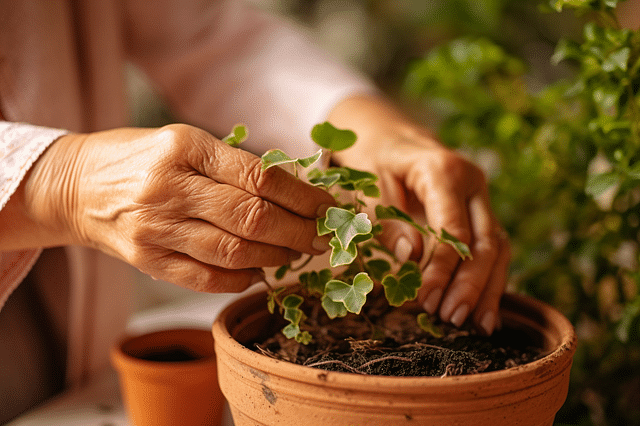
Wait until the top half-inch of soil is dry before watering again to avoid overwatering.
Avoid fertilizing in winter when the plant is not actively growing to prevent salt buildup in the soil.
Maintain humidity by using pebbles or misting, and keep temperatures between 50°F to 70°F for optimal growth.
Consider adding compost or aged manure to improve drainage and increase organic matter content in the soil.
By following these best practices for watering and fertilizing English Ivy, you can ensure the healthy growth and flourishing appearance of this versatile and resilient plant. Remember to regularly assess the soil moisture level and adjust the watering frequency accordingly, as well as provide the necessary nutrients through appropriate fertilization. With proper care, your English Ivy will thrive and become an eye-catching addition to your garden or indoor space.
Pruning and Training English Ivy for a Lush Appearance
Pruning and training English ivy is essential for maintaining its lush appearance and promoting healthy growth. Regular pruning helps to control the ivy’s size, shape, and density, ensuring it remains an attractive addition to any garden or landscape.

Here are some best practices:
- When to Prune: Pruning is best done in early spring, allowing the plant to heal and grow new leaves as temperatures rise.
- Pruning for Growth: Pruning is not just about cutting back; it’s about cultivating growth in the direction you want. Pruning can help shape and control the ivy’s growth without stressing the plant.
- Pruning Techniques: Use sharp scissors or pruning shears for clean cuts, which help prevent damage to the plant. For thicker stems, consider using lopping shears or a hand saw.
- Pruning Goals: Prune for rejuvenation or to control overgrown ivy in early spring, giving the plant a full growing season to recover and flourish. For a light trim, feel free to snip away any time of year, as long as you’re not in the middle of a frost.
- Pruning and Plant Health: Remove dead or diseased foliage to prevent issues from spreading. A clean cut is a healthy cut.
- Tools for Pruning: Use sharp scissors or pruning shears for cuts up to 3/4 inches in diameter. For larger branches, consider using lopping shears or a hand saw.
- Maintaining Tools: Regularly sharpen your tools for clean cuts and sanitize them with alcohol between cuts to prevent disease spread.
By following these best practices, you can prune and train your English Ivy for a lush and controlled appearance.
As an avid gardener who frequently engages in pruning tasks, I recently had the opportunity to use the Q-yard QY-741F Flower Bed and Grass Shear, and I must say, it exceeded my expectations in every aspect.
First and foremost, the compound lever technology incorporated into these shears truly sets them apart. The multiplied leverage provided up to two times more cutting power than traditional single-pivot shears, making pruning tasks significantly easier and more efficient. Whether I was trimming decorative grasses around flower beds or edging along sidewalks, the shears effortlessly tackled each task with precision and ease.
In terms of performance, the Q-yard shears delivered consistently sharp and precise cuts, resulting in clean and tidy pruning outcomes. Whether tackling smaller branches or more substantial growth, the shears proved to be reliable and effective in every scenario.Overall, I highly recommend the Q-yard QY-741F Flower Bed and Grass Shear for anyone in need of a high-quality pruning tool.
- Extra Sharp Blades: The Q-yard QY-741F Flower Bed and Grass Shear feature fully hardened, middle carbon 50C steel blades with a serrated edge, ensuring extra sharpness for precise cutting.
- Compound Lever Technology: This shear incorporates compound lever technology, providing up to two times more cutting power compared to traditional single-pivot shears. This feature enhances efficiency and makes cutting easier, especially in dense or tough grass.
- Comfortable Ergonomic Design: Designed for comfort during extended use, the shears feature non-slip grips that offer control and reduce hand fatigue. The lightweight construction ensures easy handling without sacrificing durability.
- Versatile Use: Ideal for edging and trimming decorative grasses around flower beds, trees, and sidewalks, these shears are versatile tools suitable for various landscaping tasks.
- Non-stick Coating: The blades are coated with non-stick PTFE, ensuring smooth cutting and preventing debris buildup, which can hinder performance.
- Durable Construction: Constructed from high-quality materials, including alloy steel for the handles, these shears are durable and built to withstand regular use in outdoor environments.
- Latch Mechanism Concerns: Some users have reported issues with the retainer latch, mentioning that it can be loose and may lock itself while clipping. This could potentially be a usability concern for individuals with small hands or those requiring precise control.
- Blade Sharpening: While the blades are durable and retain sharpness for a long time, sharpening may be required occasionally, especially after extended use or when cutting particularly tough vegetation.
- Limited Cutting Width: With a cutting width of 5 inches, these shears may not be suitable for cutting larger areas of grass efficiently. Users may find themselves needing to make more passes to cover larger areas, which could be time-consuming for extensive landscaping tasks.
Protecting English Ivy from Pests and Diseases
Protecting English Ivy from pests and diseases is essential to ensure its health and vitality. These resilient plants are relatively low-maintenance, but they can still fall victim to various pests and diseases if proper precautions are not taken.
| Pests/Diseases | Symptoms | Treatments | Effects |
|---|---|---|---|
| Xanthomonas leaf spot | Dark brown to black necrotic lesions with water-soaked margins and chlorotic halos; twisted and malformed new growth | Remove infected leaves, use cupric hydroxide or fosetyl aluminum for control | Twisted and malformed growth, reduced plant health |
| Colletotrichum leaf spot | Brown lesions with dark structures (acervuli) producing spores; spread via water and wind | Clip leaves with lesions, use foliar fungicide, avoid overhead watering | Spread of spores, reduced plant vigor |
| Rhizoctonia root and stem rot | Water-soaked areas on lower leaves, wilting, dark-brown leaves; stems covered in white spores | Plant in sterilized beds, use soil fungicides as drench around infected plants | Wilting, stem and root damage, potential plant death |
| Fusarium root rot | Wilted, chlorotic plants; rotting stems at soil surface; white dust-like spores on stems | Remove severely infected plants, drench remaining plants with fungicide | Wilted plants, potential soil contamination |
| Anthracnose | Large tan-to-dark brown spots with black pycnidia; dark sunken lesions on stems | Remove infected leaves, avoid overhead watering, use foliar fungicide | Leaf damage, stem lesions |
| Bacterial Leaf Spot | Circular light green water-soaked spots turning brown with red margins; blackening of twigs and petioles | Remove infected tissue, avoid overwatering and high temperatures | Reduced plant growth and health |
By taking proactive measures to protect English Ivy from pests and diseases, gardeners can promote its growth and maintain its lush appearance. Regular monitoring, appropriate watering practices, and prompt action when pests or diseases are detected are key to ensuring the long-term health of this versatile and beautiful plant.
Managing Weeds and Competition Around Your English Ivy
Weeds and competition can pose significant challenges to the growth and vitality of your English Ivy. If left unmanaged, these intruders can deprive your plants of essential nutrients, water, and sunlight, hindering their overall health and vigor. Therefore, it is crucial to develop effective strategies to manage weeds and competition around your English Ivy to ensure its success in your garden.
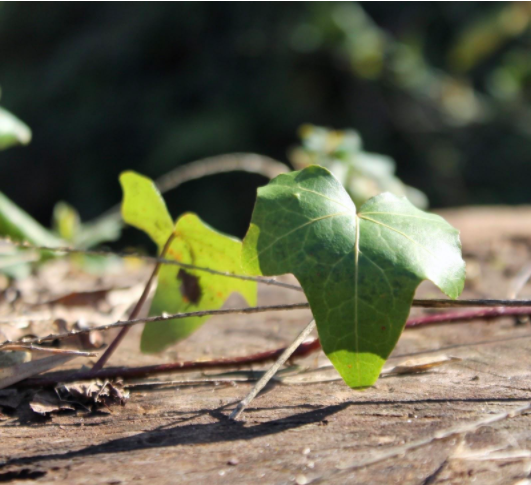
- Mulching: Apply organic mulch like shredded bark or wood chips around the base of English Ivy to reduce weed germination, conserve soil moisture, and regulate soil temperature. Maintain a layer of mulch 2-3 inches deep to prevent weed growth.
- Regular Cultivation and Hand-Pulling: Loosen soil around Ivy plants to disrupt weed roots without damaging Ivy’s shallow roots. Hand-pull visible weeds, ensuring complete root removal to prevent regrowth.
- Preventative Measures: Avoid overwatering to deter pests like fruit flies and fungus gnats. Ensure good air circulation, maintain a clean environment, avoid over-fertilization, and practice pruning and hygiene to prevent pest infestations.
- Monitoring and Quick-Fix Tactics: Regularly inspect plants for signs of trouble like discolored leaves or sticky residue. Isolate affected plants if pests are present, maintain cleanliness, and use insecticidal soaps or neem oil as initial pest control measures.
Implementing effective weed management practices and reducing competition around your English Ivy is vital for its long-term health and growth. By applying organic mulch and regularly cultivating the soil or hand-pulling weeds, you can create an optimal environment where your English Ivy can thrive and remain a stunning addition to your garden. Stay vigilant and keep your Ivy well-maintained, ensuring that it receives the care it needs to outshine any competing vegetation.
Understanding the Growth Patterns of Hedera Helix
Hedera Helix, commonly known as English Ivy, is a versatile and hardy plant that exhibits unique growth patterns. Understanding these patterns can help gardeners make informed decisions when it comes to cultivating and maintaining this popular plant.

Characteristics:
- Hedera helix is an aggressive, fast-growing woody evergreen perennial that can reach heights of 50-100 feet.
- It can cover up to six to nine inches when growing on the ground.
- In its adolescent stage, it climbs quickly on other plants with thick, three to five-lobed dark green leaves up to four inches long.
- The plant has adventitious roots and non-flowering stems during this stage.
- As it matures, it stops climbing and becomes shrubbery with lobe-less leaves.
Juvenile and Adult Growth:
- Ivy has two distinct growth phases. In the juvenile stage, it sends out long stems that seek vertical surfaces, growing rapidly upwards and holding on with adventitious roots.
- Once well-established (around 10 years), growth switches to the adult phase where leaves change shape, becoming un-lobed, and the plant becomes shrubby with flowers in autumn and berries that ripen over winter and spring.
- Regular pruning can maintain ivies in a self-clinging, non-flowering juvenile state.
Host Preference and Growth Patterns:
- Radial growth of ivy stems is positively related to available space on tree trunks.
- Light-demanding climbing ivy stems ascend trees to reach better light conditions. Preferred hosts are large, isolated trees.
Cultivation and Garden Use:
- Ivies are shade-tolerant, easy to grow, evergreen plants that thrive almost anywhere.
- They make excellent groundcover, stabilize soil, provide year-round greenery, and are self-clinging climbers suitable for walls or fences.
- Some cultivars are available in adult-only states for bushy, non-climbing growth with annual flowering. Ivies are versatile garden plants used as climbers, groundcover, houseplants, or topiary.
In summary, understanding the growth patterns of Hedera Helix can guide gardening enthusiasts in maximizing the potential of this versatile plant. Whether used for vertical coverage or groundcover purposes, English Ivy’s unique growth characteristics make it a valuable addition to any garden.
Recognizing Signs of Stress and How to Address Them
English Ivy, also known as Hedera Helix, is a resilient and versatile plant that can thrive in various conditions. However, like any living organism, it can occasionally experience stress. Understanding the signs of stress and knowing how to address them is essential for maintaining the health and vitality of your English Ivy.
To address this, ensure adequate watering without overwatering and consider moving the plant to a cooler location or providing shade during peak sunlight hours.
To remedy this, consider fertilizing the plant with a balanced fertilizer following manufacturer’s instructions to replenish lacking nutrients and avoid over-fertilization.
By recognizing these signs of stress and promptly addressing them, you can ensure that your English Ivy remains healthy, vibrant, and visually appealing. Stay tuned to learn more about how to incorporate English Ivy in vertical gardening and topiary to elevate your gardening endeavors.
Using English Ivy for Groundcover and Erosion Control

Incorporating English Ivy in Vertical Gardening and Topiary
Vertical gardening and topiary are two popular techniques that allow gardeners to creatively incorporate English Ivy into their landscapes. Vertical gardening involves growing plants vertically, either on walls, trellises, or other structures, maximizing limited space. English Ivy’s natural climbing habit makes it an excellent choice for vertical gardens, as it can easily cling to structures and create a stunning green backdrop.

Sharing Your English Ivy Success: Tips for Propagation and Gift-giving
Propagation and gift-giving are two great ways to share the success of your English ivy plants with others. English ivy is a versatile plant that can be easily propagated through various methods.
- Stem Cutting Propagation: Take stem cuttings from healthy plants and root them in water or a suitable growing medium.
- Preparation: Remove lower leaves from the cutting to promote root development.
- Potting: Once roots have formed, pot the new ivy plants for gifting to friends, family, or gardening enthusiasts.
- Layering Method: Bury a section of the stem while still attached to the parent plant to encourage root growth.
- Separation: Once roots are established, separate the new plant from the parent and pot it for gifting.
- Versatility: Layering can be done in the ground or in containers, offering convenience in propagating English ivy.
- Gift Appeal: Potted English ivy plants make beautiful and meaningful gifts due to their lush foliage and adaptability.
- Personalization: Enhance the gift with a personalized touch such as a decorative pot or homemade plant marker.
Not only will the recipient appreciate the thoughtfulness of the gift, but they will also have the opportunity to enjoy the many benefits that English ivy brings, such as improved air quality and a touch of natural beauty in their home or garden. So why not share your success with others by propagating and gifting English ivy plants? It’s a rewarding way to spread joy and greenery.
Watch video for more information:
FAQ
What are some benefits of growing English Ivy?
English Ivy provides numerous benefits, including improving air quality, reducing noise pollution, and acting as a natural insulator for buildings.
How do I select the perfect location for my English Ivy?
Choose a location that offers partial shade or filtered sunlight. English Ivy can tolerate a variety of soil conditions but prefers well-drained soil.
What is the best way to propagate English Ivy?
English Ivy can be propagated through stem cuttings or by layering. Both methods are effective and relatively easy to follow.
Can I use English Ivy for erosion control?
Yes, English Ivy is an excellent choice for erosion control due to its dense growth and ability to effectively stabilize soil on slopes.
Are there any specific pruning techniques for English Ivy?
Pruning English Ivy involves removing dead or damaged foliage, as well as thinning out dense areas to promote airflow and prevent disease.
How can I protect my English Ivy from pests and diseases?
Regularly inspect your English Ivy for signs of pests such as aphids or spider mites. Applying organic insecticides and practicing good hygiene can help prevent diseases.
Can English Ivy be used in vertical gardening?
Absolutely! English Ivy’s trailing growth habit makes it an ideal choice for vertical gardening, where it can be trained to climb trellises or walls.
What are some signs of stress in English Ivy?
Wilting, yellowing leaves, stunted growth, or leaf drop can indicate stress in English Ivy. Addressing the underlying issue, such as inadequate watering or poor soil quality, is crucial.
Can English Ivy be used as a gift plant?
Yes, English Ivy can make a wonderful gift plant. Potted English Ivy plants are popular choices for housewarming gifts or as a symbol of friendship and loyalty.
Is English Ivy invasive?
While English Ivy can be invasive in certain regions, proper management and containment can prevent it from spreading uncontrollably. Check with local authorities for guidelines on planting English Ivy in your area.

Studied Agricultural Engineering-Plant Protection at University of California, Davis.
Head of Content writing team at Southelmontehydroponics.com

